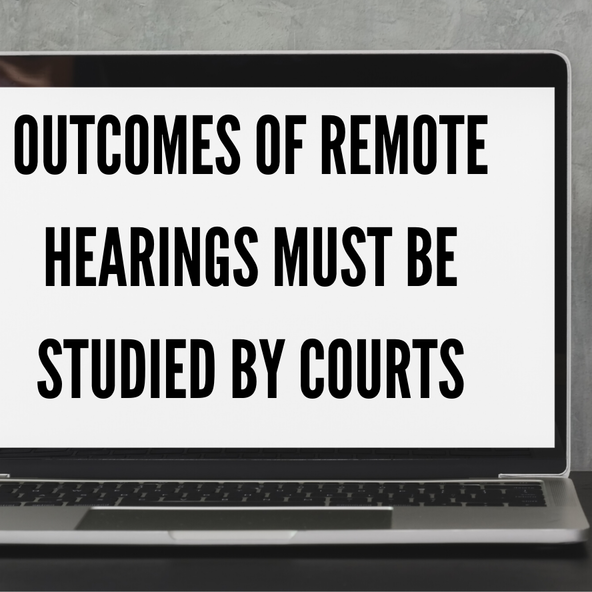
“Zoom Court” is the new norm. As with all other aspects of life, justice is now being delivered virtually. According to the National Center for States Courts, all fifty states plus the District of Columbia have either suspended or given localities the option to suspend in-person proceedings. In Texas, hundreds of courtrooms have been operating remotely over Zoom, with live streamed proceedings. In Florida, a major voting rights case, about whether Florida residents with felony convictions must pay back court fines and fees before regaining their right to vote, was heard via video conference. Here in the District, some courtrooms in the Criminal, Probate, and Family Court Divisions are also operating remotely. The Civil Division is prioritizing hearing emergency and urgent matters remotely, with some additional types of hearings depending on availability of the Court and parties. High volume courts, including the Landlord and Tenant Branch, will start to hear some matters remotely.
For those cases that are heard virtually, are the outcomes of these cases impacted because the cases are held virtually? For example, does appearing virtually diminish the credibility of a witness? As the justice system rapidly shifts to remote hearings, it is important for courts to immediately study the impact of remote hearings and make any needed changes in the process to ensure equal access to justice. For instance, The D.C. Access to Justice Commission Courts- COVID Task Force recommends that DC Courts convene a working group to study and provide feedback on remote hearing procedures. The few studies on remote appearances conducted several years ago have shown that there may be unequal outcomes for litigants appearing remotely.
Immigration, bail, and administrative hearings have used some form of remote technology prior to the current pandemic. According to the first empirical study on the use of televideo technology in immigration cases, researchers found that televideo cases were more likely to result in deportation compared to in-person cases. In televideo cases, defendants appeared remotely from detention centers while all other parties appeared in the courtroom, including the defendants’ attorney. While there was no statistically significant evidence that judges decided televideo cases more harshly, the author of the study, Professor Ingrid V. Eagly, pointed to a decrease in the defendants’ engagement in the litigation process as the reason for the difference in outcome. Defendants in televideo cases were less likely to be represented by attorneys, assert an affirmative claim for relief, or have a trial. One potential reason for decreased engagement, according to Professor Eagly, was the defendants’ perception that not being brought to court for a hearing was unfair. My colleague June Lee recently wrote a blog post about how procedural fairness impacts litigants.
Another study by Professor Shari Diamond et al. studied bail decisions eight years prior and after the implementation of Closed Circuit Television Procedure (CCTV) in bail hearings in Cook County Illinois, which started in 1999. The researchers found a sharp increase in the average amount of bail set in cases with CCTV but no similar change in live hearings. Similar to the study in immigration cases, the defendants appeared remotely from jail while all other parties appeared in-person in the courtroom. In a 2008 study from Sweden, mock jurors hearing in-person testimony perceived witnesses’ appearance more positively, viewed witnesses as being more honest, and believed they had better memory of the testimony than witnesses testifying via video.
These studies highlight the need for further research on the impact of modern-day remote hearings versus in-person hearings. There’s good reason to believe that litigants may not be experiencing the unequal outcomes as they did from technology in the past, because technology has vastly improved since these studies. Modern day technology has far superior audio and video quality, embedded cameras, and “break-out” room features for confidential attorney-client communications. Further, in most cases, all parties are appearing remotely.
However, courts must ensure that the transition to remote operations does not lead to unequal results for litigants. Although the rapid change in court operations over the last few months presents an opportunity to reimagine a court system that increases access to justice for all litigants, it may also present challenges to equal access. Courts must avoid harmful results like the one in which a Texas Court issued a warrant for arrest against a litigant who did not log into her Zoom hearing, another Texas Court issued five default judgments in one day against tenants in eviction cases because tenants did not log into their Zoom hearings, and in New Orleans Court Watch NOLA could not get access to virtual bail hearings for over a month, even though hearings are required to be open to the public. By establishing a committee or working group, courts can potentially address these harmful results immediately by making changes based on the group’s recommendations.




